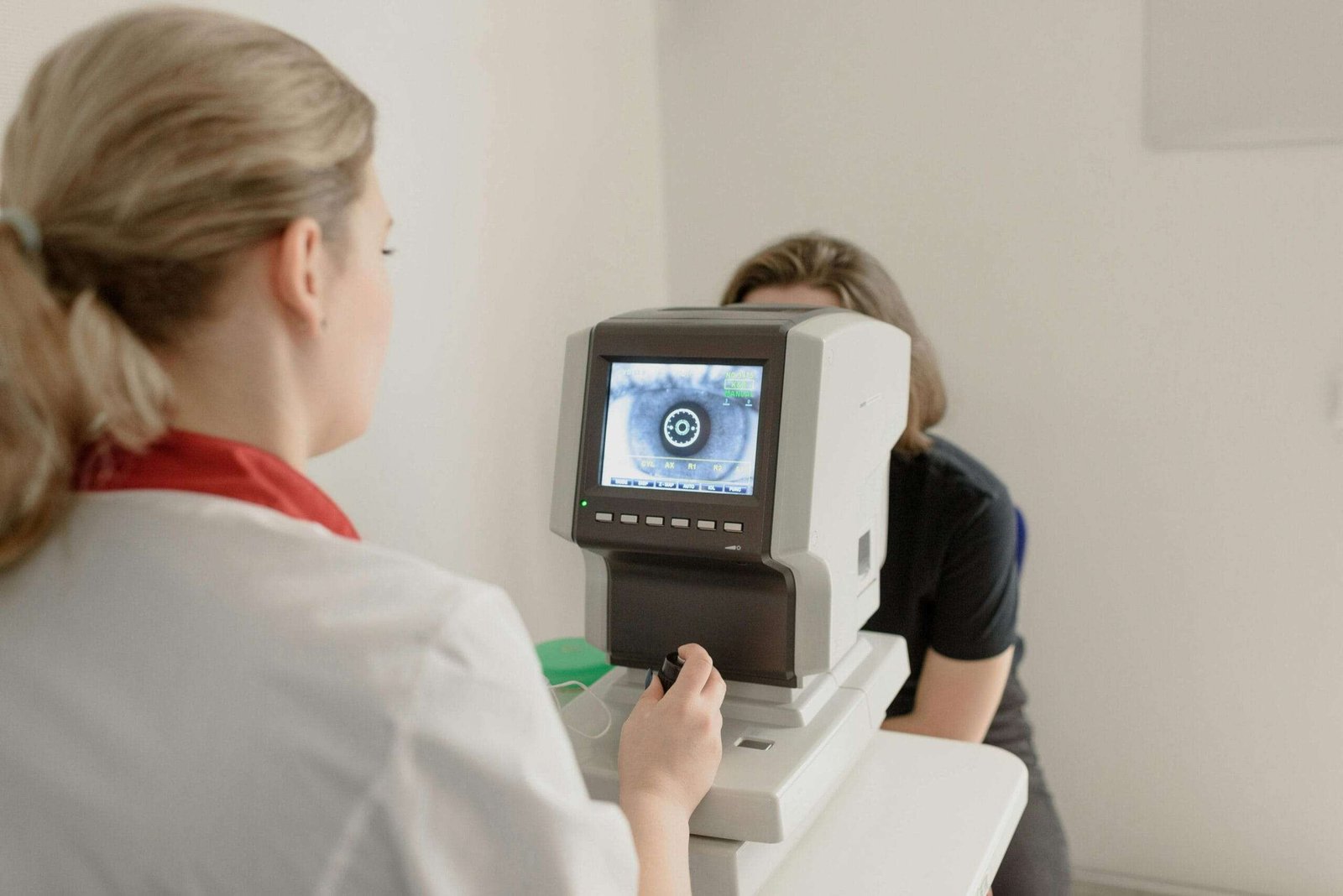Eye Pressure

Eye Pressure (Intraocular Pressure – IOP): Understanding Its Role in Eye Health
Eye pressure, also known as intraocular pressure (IOP), refers to the fluid pressure inside the eye. Maintaining a balanced IOP is essential for the overall health of the eye and for preventing conditions that can lead to vision loss, like glaucoma. The right amount of pressure helps keep the eye’s shape and allows it to function properly, while too much or too little pressure can cause problems.
Regular eye exams are crucial for monitoring intraocular pressure and ensuring early detection of conditions like glaucoma. If you experience any symptoms of high or low eye pressure, it’s essential to consult with an eye care professional as soon as possible. At Vision Care, we are dedicated to providing comprehensive eye health evaluations, including IOP monitoring, to help protect your vision.
1. What Is Intraocular Pressure (IOP)?
Intraocular pressure is determined by the balance between the production and drainage of aqueous humor, a fluid that nourishes the eye. The normal IOP range is typically between 10-21 mmHg (millimeters of mercury). When this balance is disrupted, and the pressure is either too high or too low, it can lead to eye disorders.
2. High Eye Pressure (Ocular Hypertension)
High IOP, known as ocular hypertension, occurs when the aqueous humor doesn’t drain out of the eye as efficiently as it should, causing fluid buildup. This leads to increased pressure inside the eye, which can eventually damage the optic nerve and lead to glaucoma if not treated.
Symptoms of Ocular Hypertension:
- Generally, no symptoms are noticeable in the early stages.
- Eye pain or discomfort (in some cases).
- Blurred vision or seeing halos around lights (in advanced cases).
Risk Factors:
- Age (increased risk with age).
- Family history of glaucoma.
- Thin corneas.
- Certain medical conditions like diabetes and hypertension.
3. Low Eye Pressure (Hypotony)
Low IOP, or hypotony, occurs when the pressure inside the eye is abnormally low. This condition can result from trauma, inflammation, or post-surgical complications. If untreated, hypotony can lead to structural changes in the eye and cause vision problems.
Symptoms of Hypotony:
- Blurred or distorted vision.
- Discomfort in the eye.
- Sunken appearance of the eye in severe cases.
4. Why Is Monitoring Eye Pressure Important?
Maintaining normal IOP is critical in preventing serious eye conditions, particularly glaucoma, which is a leading cause of irreversible blindness. Regular eye exams can help monitor IOP, detect any abnormal changes, and allow for timely treatment.
5. How Is IOP Measured?
Measuring IOP is a routine part of a comprehensive eye exam. The most common methods include:
- Goldmann Applanation Tonometry: Considered the gold standard for measuring eye pressure, this method uses a special device to flatten a small part of the cornea to measure the resistance, indicating IOP levels.
- Non-Contact (Air Puff) Tonometry: This method uses a puff of air to flatten the cornea and measure IOP. It’s quick and doesn’t require any numbing eye drops.
- Tono-Pen: A handheld device that lightly touches the cornea to measure eye pressure. It’s useful for people who cannot use other methods.
6. Managing Abnormal IOP
- Medications: Eye drops that reduce the production of aqueous humor or increase its drainage can help lower IOP.
- Surgery: In more severe cases, surgery may be required to improve fluid drainage from the eye.
- Lifestyle Changes: Healthy habits like controlling blood pressure, managing stress, and avoiding activities that increase eye pressure can also be beneficial.





